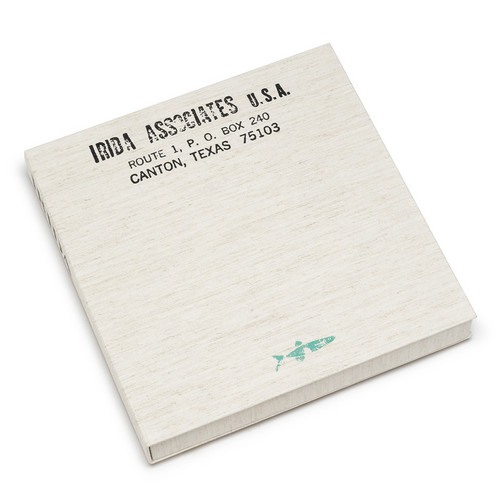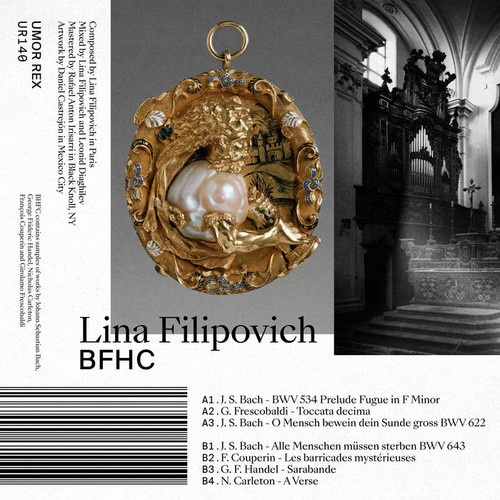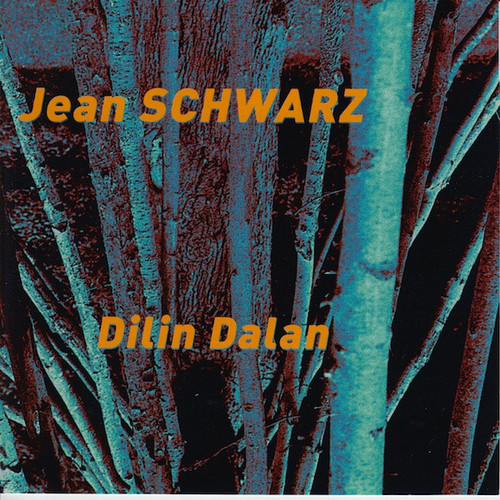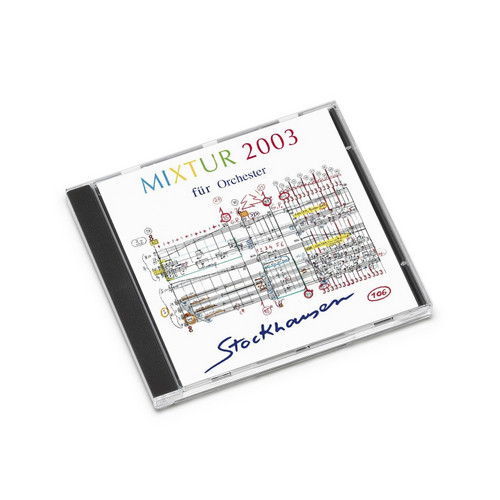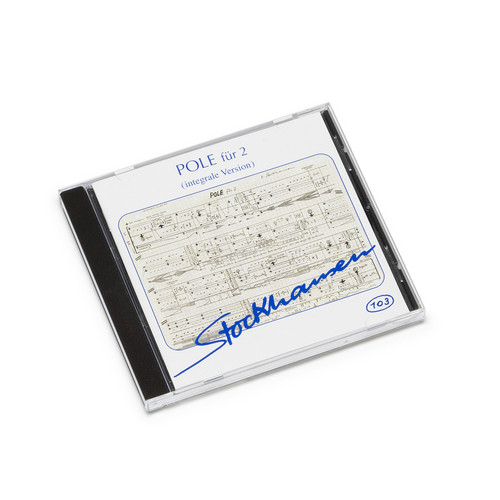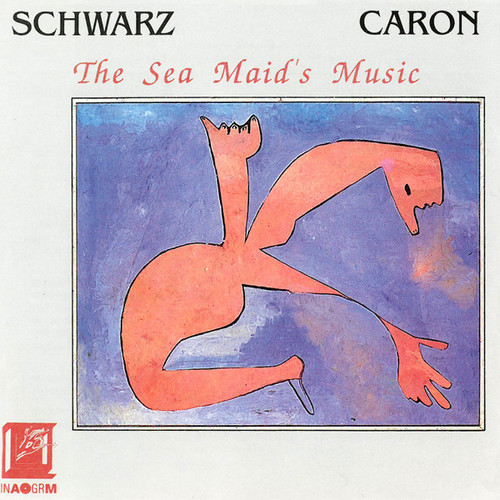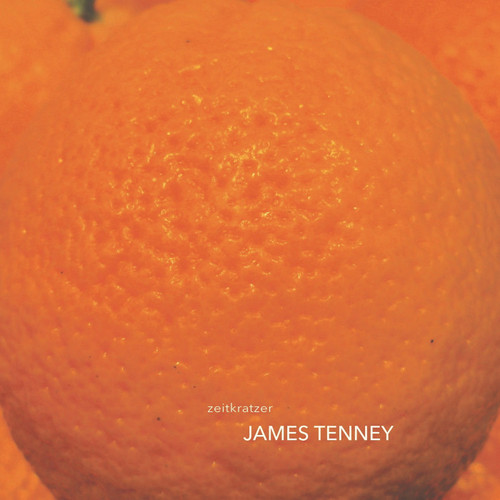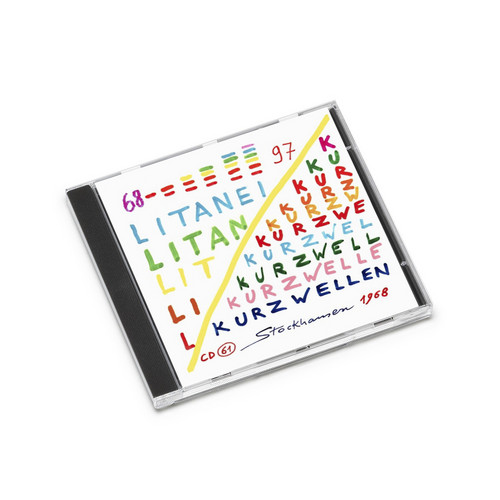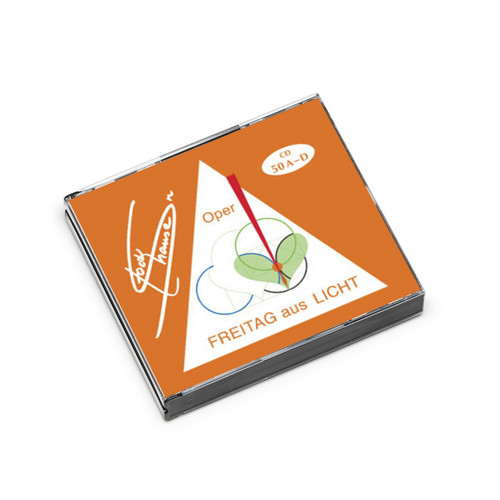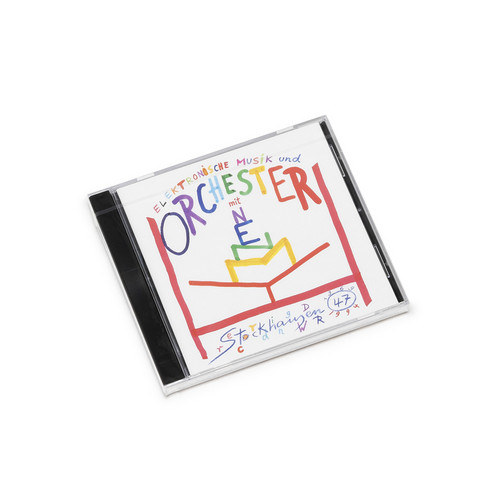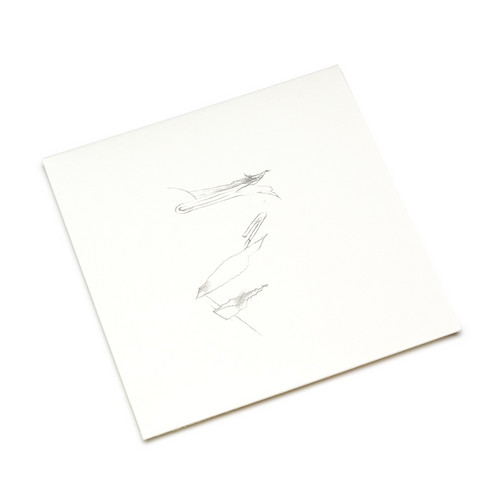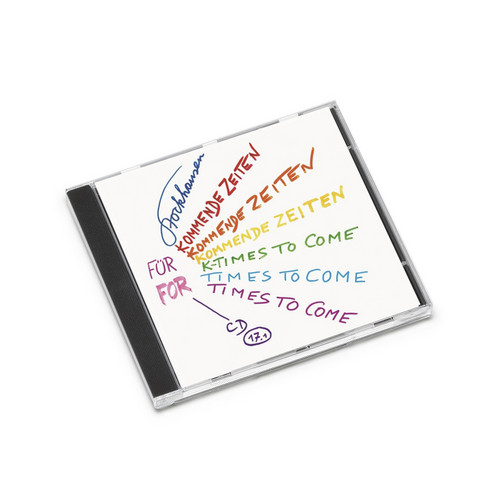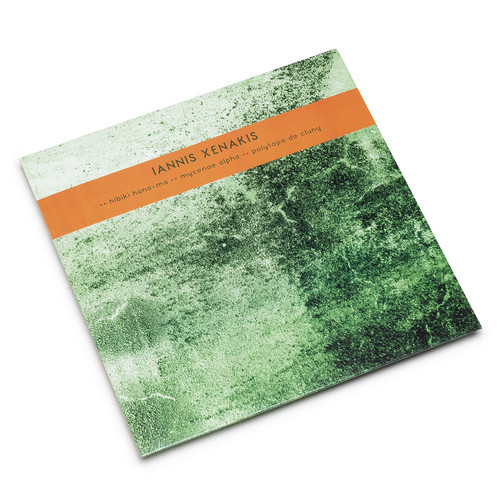Classical Works
*In process of stocking. 2022 stock.* David Shea's sampling technique manages to be both one of the most innovative experiments in classical music and, at the same time, one of the most conservative uses of pre-recorded music. As the first piece on his Classical Works collection, "Chamber Symphony #1" highlights his unique process. The recording is the result of an original performance by the Brussels-based Ictus Ensemble, a 16-member chamber orchestra. The ensemble contributed to the recording …
Irida Records: Hybrid Musics from Texas and Beyond, 1979–1986
An incredible set of vinyl reissues explores the unfolding sonic fiction of Texan composer Jerry Hunt and others affiliated with his Irida label.
BFHC
Limited edition of 100 copies. On her second album (first one on Umor Rex), the Minsk born / Paris based artist Lina Filipovich continues her experiments on deconstruction and re-appropriation of classical pieces. BFHC includes seven electronic interpretations of the works of Baroque composers such as Bach, Handel, Frescobaldi, Carleton and Couperin. Inspired by memories of her experience of interpreting Bach's pieces in early childhood, Filipovich explores the desire to push the limits of perfo…
Dilin Dalan
*2022 stock* Ongi, Welcome, Dilin Dalan, Oyez, Sing good people in this encounter with pure tradition, ethnomusicological travel, sound transformation and electroacoustics! The ancestral percussion, Txalaparta, rediscovered by the Artze brothers, dialogue with those of the orchestra and those of Alex Grillo's MIDI xylophone connected to a sampler. Befiat Axiary's singing is inspired as much by tradition as by contemporary creation, both in spirit and in form.
Seduced by (a) last year
Seduced by (a) last year is artist, musician, and researcher, Andreas Hiroui Larsson’s first album under his own name and which features his interdisciplinary music. Larsson weaves together materials from his art,music, and philosophy practices by way of an interdisciplinary artisticmethod, in which imagery, live improvisation, recordings, and text investigate the purpose of one another by entering each other’s fields, andperforming each other’s roles. Larsson’s music constitutes a layered hybri…
Mixtur 2003 Vorwärtsversion
*2022 Stock.* This recording of an updated version of Mixtur (for 5 ring-modulated orchestra groups, orig. 1964/67) features the Deutsche-Symphonie-Orchester Berlin, conducted by Wolfgang Lischke. In contrast to the original, graphic notation-based version of Mixtur (on The Stockhausen Edition no. 8), all of the orchestra parts for the updated 2003 version are completely notated.- Stockhausenspace.blogspot.com
Pole Für 2 (Integrale Version)
*2022 Stock.* 'The Stockhausen Edition no. 103 contains the first complete recording of Pole (Poles, 1969-70) for 2 soloists with shortwave radio (and small instruments). Vocalists Natascha Nikeprelevic and Michael Vetter are featured here. The score for Pole includes directions for spatial placement of sound sources, which were realized through panning and digital reverb. An earlier recording of this piece with Péter Eötvös & Harald Bojé can be found on The Stockhausen Edition no. 15.' - Stockh…
The Sea Maid's Music
*2022 stock* Adapted from Shakespeare's Midnight Summer Dream. Realized April-May 1990 using the Syter system developed within Groupe de recherches musicales by Daniel Terruggi. Composed by Jean Schwarz, vocals by Elise Caron
James Tenney
By Zeitkratzer director Reinhold Friedl's personal request now available on vinyl for the first time: Zeitkratzer's critically acclaimed interpretations of groundbreaking compositions by James Tenney.James Tenney (1934 - 2006) was a composer, music theorist and pioneer especially in the field of microtonal music, being an influential part of the so-called New York avantgarde scene (Cage, Feldman). Besides his compositonal work, Tenney was teacher at various universities with students like Charle…
Music for saxophone with Julien Petit
*2022 Stock.* This CD features the saxophone artistry of Julien Petit. Some of these works were originally written for other wind instruments from 1976 to 1986, but are here newly arranged for saxophone. The 2nd saxophone part of Knabenduett is played by Antonio Felippe Belijar, and some relatively minimal percussion was provided by Michael Pattmann and Kathinka Pasveer.- Stockhausenspace.blogspot.com
Litanei 97 - Kurzwellen
*2022 Stock.* This disc contains two pre-Licht pieces, one a modernized reworking of an intuitive text piece from Aus Den Sieben Tagen, and the the other an "historical/archival" release from the shortwave radio "Plus-Minus" series. Litanei 97 is basically a reworking of the piece Litanei (Litany) from Stockhausen's 1968 collection of intuitive text pieces, Aus Den Sieben Tagen (From the Seven Days), which generally uses verbal instructions to direct improvisational ensembles performances. In co…
Helikopter-StreichQuartett
*2022 Stock. Includes a 100-page booklet.* Helikopter-StreichQuartett (Helicopter String Quartet, 3rd scene of Wednesday from Light) for string quartet and 4 helicopters (1992/93). The 3rd Scene from the opera Mittwoch Aus Licht (Wednesday from Light) is centered on a string quartet piece, accompanied by the sounds of close-miked helicopter rotor engines, and interrupted throughout by shouted numbers in German (by the string quartet players). In a staged concert, members of the string quartet ar…
Freitag Aus Licht
*2022 Stock.* This 4 CD set contains the complete staged version of Freitag Aus Licht (Friday from Light), with all three layers presented: Weltraum (ambient background sound textures), the 12 Sound Scenes" created from the Paare vom Freitag (electroacoustic/concrete vocal duets) and the 10 "Real Scenes" (live performances with vocals, choir, children's choir, bassett-horn, flute, synth). This electro-acoustic opera especially stands out for it's use of opposing children's choir groups. - Stock…
Paare Vom Freitag
*2022 Stock.* Paare Vom Freitag (Couples of Friday) with soprano, bass, electronic instruments (signal processing and samples) (1992/99). The Stockhausen Edition no. 48 contains 99 tracks of the isolated electro-acoustic/concrete vocal duets from the opera Freitag aus Licht (Friday from Light). In the opera these brief duets are sequenced and layered into 12 "Sound Scenes" spread throughout the opera, but on this disc they are presented as isolated events. These short vocal duets featuring the v…
Hymnen - Elektronische Musik Mit Orchester
*2022 Stock.* Hymnen - Elektronische Musik Mit Orchester is the premier recording of a specially-adapted version of the 3rd Region of the massive electronic/tape work Hymnen. Commissioned for a 1971 concert with the New York Philharmonic, Stockhausen scored a new orchestral accompaniment to this particular quadrant (the other 3 Regions were accompanied in this concert by the electro-acoustic Stockhausen Group, employing intuitive strategies). This orchestra and tape version also includes a solo …
Solo
*2022 Stock.* Solo includes new recordings of vintage-era variable-form solo chamber works involving shortwave radio or delay processing. A unique version of Solo (accompanied by excerpts from Hymnen Region 2) was previously recorded by trombonist Vinko Globokar for Deutsche-Grammaphon, but this is its first proper appearance on the Stockhausen label. Earlier electro-acoustic noise versions of Spiral can be found on The Stockhausen Edition no. 15. Both of these works feature an element of perfor…
Block Gifts
*300 copies limited edition. In process of stocking* Block Gifts is a collection of three works for organs composed by James Rushford between 2015 and 2018. Using harmonium, portative organ and electric organ, each piece is linked by Rushford’s idiosyncratic combination of strict intervallic systems in different tunings (Werckmeister, quarter-tone, equal temperament), and haptically-informed rhythmic and expressive freedom. Creaks, stutters and sweeping fingers on keys become instrumental sounds…
Inori
*2022 Stock.* Inori is a large scale work for orchestra which portrays the formation of a theme, one parameter at a time (rhythm - dynamics - melody - harmony - polyphony). Essentially, slow-moving sound masses in the beginning evolve into dramatic, complex gestures by the end. Two dancer-mimes are listed as soloists, but obviously they can't be heard on the CD. Inori is a further development of the formula concept Stockhausen first began exploring in Mantra,and would eventually be fully explore…
Für Kommende Zeiten
*2022 Stock.* Für kommende Zeiten is a relatively contemporary recording of some intuitive music pieces from Stockhausen's second collection of text scores, recorded by the Ensemble for Intuitive Music Weimar (Michael von Hintzenstern (piano/harmonium), Matthias von Hintzenstern (cello), Hans Tutschku (synthesizer), Daniel Hoffmann (trumpet)) on May 28, 2005. During a period of personal upheaval and crisis, Stockhausen wrote a set of texts, Aus Den Sieben Tagen, which are essentially verbal inst…
Hibiki Hana-Ma / Mycenae Alpha / Polytope De Cluny
*Restocked, reduced price* "Hibiki Hana-Ma" was created in 1969 for the Steel Pavilion of the Japan Iron and Steel Federation at the Expo 1970 in Osaka as musical part of a multimedia show. Even though the work does not bear the designation in its title, it can be already regarded as a Polytope: it was created for a specific architectural location, lasers and mirrors have been installed: a light choreography by the Japanese artist Keiji Usami accompanied the spectacle. This concept of synchroniz…

